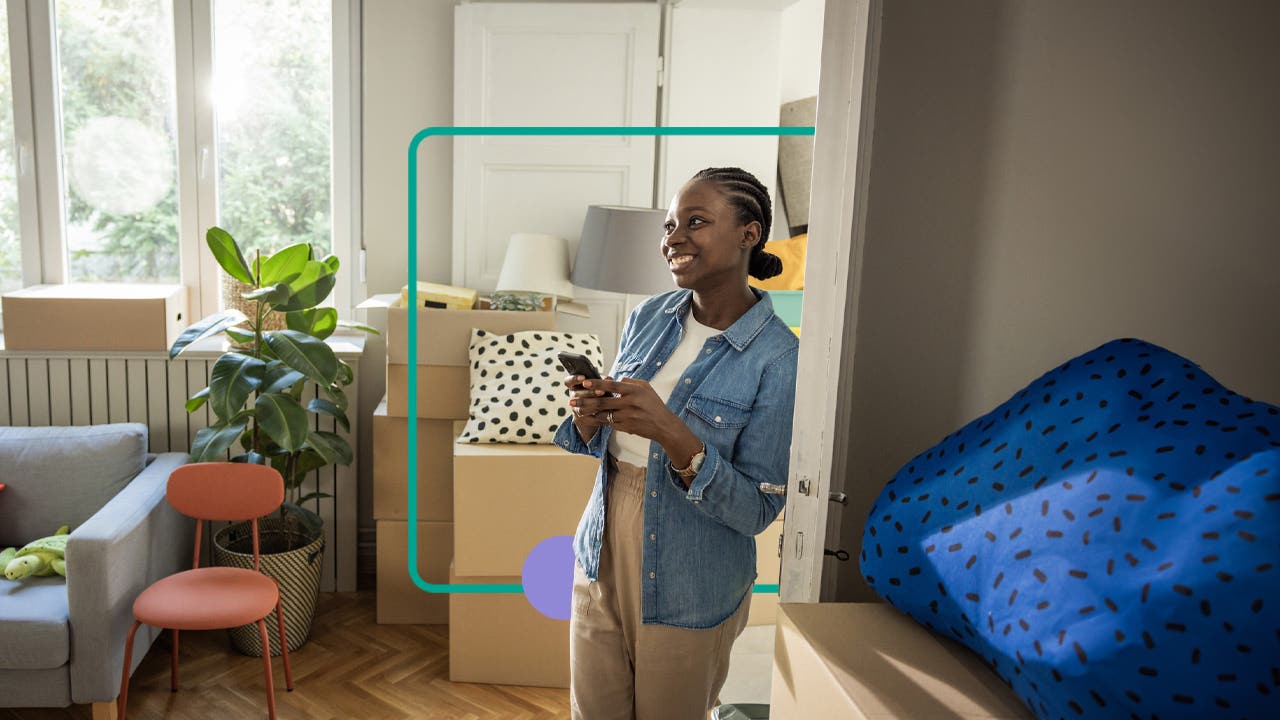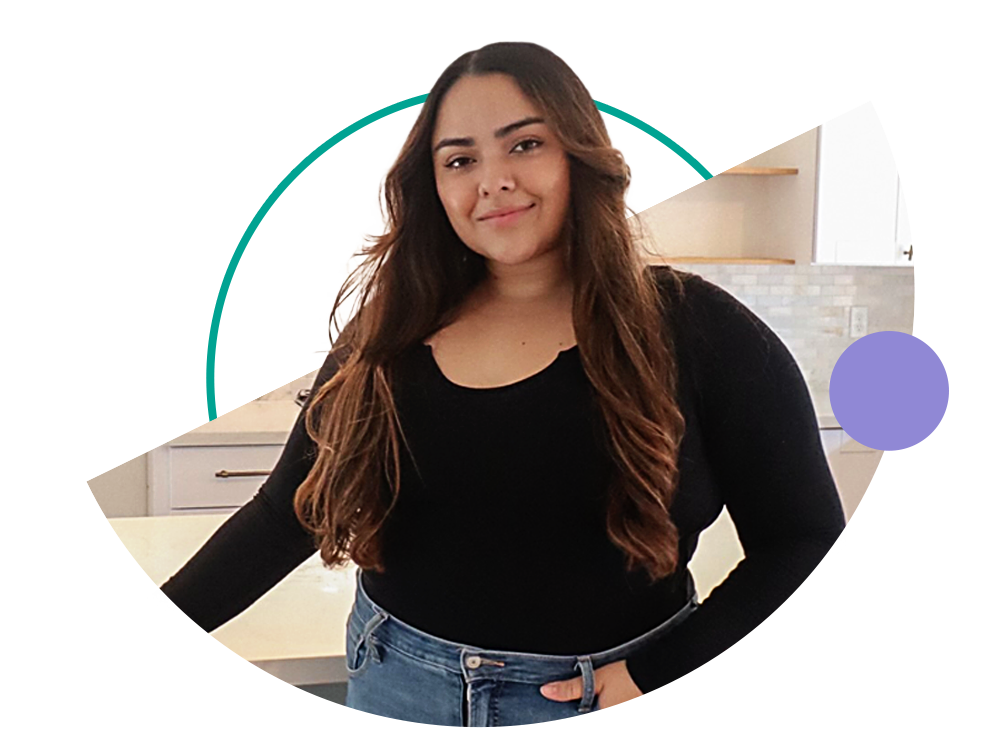Millennials lead the charge in solo home purchases and buying with friends and family, defying norms

Millennials are buying homes differently from their older counterparts and, in many ways, are redefining homeownership norms.
While purchasing a home with a domestic partner or spouse has been the most common way to buy a home across all generations, a higher percentage of millennials (ages 28-43) have bought homes in other ways, such as alone, with a friend or a relative other than a domestic partner or spouse, according to Bankrate’s new Homebuying Trends Survey. It’s a significant contrast from older generations who’ve primarily purchased their homes with their spouses and domestic partners.
Forty-two percent of millennials have purchased a home alone, compared to 34 percent of Gen Xers (ages 44-59) and 22 percent of baby boomers (ages 60-78). One in 10 millennials (10 percent) has purchased a home with a friend, and 7 percent have bought one with a relative other than their domestic partner or spouse.
Housing experts attribute the increase in solo home purchases among millennials to evolving generational attitudes toward marriage. Pew Research Center data shows younger Americans are increasingly delaying or forgoing marriage altogether, but their attitudes toward homeownership haven’t changed as much. Owning a home continues to be a cornerstone of the American dream for most millennials, and most are willing to be more flexible in their approach to what’s become a challenging housing market.
More millennials have also opted to buy homes with friends and relatives compared to older generations. A decade ago, this might have seemed like a far-fetched idea. Yet, high mortgage rates, rising home prices and tight inventory have made finding affordable homes tough, leading some millennials to turn to their friends and family members to split the costs and sooner achieve their dreams of owning a home.
I decided to buy a house alone because I didn't want to wait for marriage, and I've always been someone who’s super independent and ambitious. I always do things on my own, so once the opportunity was there, I wanted to use it while I had it.— Selena Trevino, a 27-year-old first-time homebuyer in the Portland metro area
Bankrate’s key insights on millennial homebuying
- U.S. homeowners most commonly have purchased a home with a domestic partner/spouse (59%). Just under a third of U.S. homeowners (30%) have bought a house alone.
- Millennials are more likely than older generations to have purchased a home alone (42%). Roughly a third of Gen Xers (34%) and 22% of baby boomers have made solo home purchases.
- 47% of millennials have purchased a home with a domestic partner or spouse, compared to 70% of baby boomers and 56% of Gen Xers.
- Millennials are more likely to have purchased a home with a friend (10%) than Gen Xers (3%) or baby boomers (1%).
- Millennials are more likely to have purchased a home with a relative other than a domestic partner or spouse (10%) than Gen Xers (5%) or baby boomers (2%).
Millennials are redefining traditional homeownership
Among U.S. homeowners, the most common way to purchase a home is with a domestic partner or spouse (59 percent). This holds true across each age group, but it’s much more common among older generations.
Seventy percent of baby boomer homeowners and 56 percent of Gen X homeowners have purchased a home with a domestic partner or spouse, whereas 47 percent of millennials have done so, according to our Homebuying Trends Survey.
The second largest share of U.S. homeowners purchased a home alone (30 percent). Millennials, who make up the majority of homebuyers per data from the National Association of Realtors (NAR), were more likely than older generations to have bought a home alone, at 42 percent. In comparison, 34 percent of Gen Xers and 22 percent of baby boomers have made solo home purchases.
More millennials, like Trevino, are becoming homeowners before tying the knot, according to Dr. Jessica Lautz, deputy chief economist at NAR. She says this is likely because millennials are rethinking the institution of marriage or getting married later in life.
“Homeownership is a priority to them, but they may plan on partnering up later,” she says.
Trevino, an economist by day and a content creator by night, says she never envisioned herself buying a house alone. “I honestly thought that if I were ever to buy a house, it would be once I was married,” she says. Trevino is part of the second largest group of homebuyers: single women. They account for 19 percent of all homebuyers in 2023, according to NAR data.

But after years of building a side hustle through content creation, she realized that her two incomes would allow her to become a solo homeowner at 27. She says living within her means and putting any extra income into a high-yield savings account were key to being able to afford a home in the Portland metro area at the end of last year — a time when home prices were rising and mortgage rates hit 8 percent.
The opportunity arose because of that extra income that I was getting, but I also wasn't spending money as I was getting it. I wanted to have a place that I could grow in and something that could be an asset in the long term.— Selena Trevino, First-time homebuyer based in the Portland metro area
Is co-ownership with friends and family on the rise among younger homebuyers?
A larger share of millennial homeowners have teamed up with friends and family to purchase homes — a trend that housing experts predict will continue amid affordability issues in the housing market and the growing number of single Americans. Ten percent of millennial homeowners have purchased a home with a friend, and 7 percent have bought one with a relative other than their domestic partner or spouse.
In comparison, only 3 percent of Gen Xers have bought a house with a friend and 5 percent have bought one with a relative other than their domestic partner or spouse. The figures are even lower for baby boomers: One percent have made a home purchase with a friend and 2 percent have bought a house with a relative other than their domestic partner or spouse.
With still-rising home prices and climbing mortgage rates raising the cost of entry, housing experts say co-buying is likely more common among first-time homebuyers who don’t have existing home equity to leverage into a home purchase. It’s easier to afford a home if you can split the costs with another person, such as a friend and relative or romantic partner.
“Affordability is probably the key reason to do that, as well as the types of homes that are available for sale,” Dr. Lautz says. “We traditionally have seen that the most popular type of home purchased is a detached single-family home because that’s the type of inventory that we have in the country. That allows enough space for two people to live independently within that property.”
What this millennial learned after purchasing a home alone
Israel Tovar, the 29-year-old co-founder and co-host of the Money Noticias Podcast, didn’t wait for a life partner to buy his first home in Nashville, Tennessee in 2018. Tovar, fresh out of graduate school at 23 years old and about to enter a new full-time teaching job, said because a mortgage payment was comparable to paying rent in his area, he plunged into the homebuying process with little knowledge.
Within a month of his search, he purchased a two-bedroom, one-and-a-half-bathroom duplex. At the time, Tovar felt he had achieved the American dream and was doing “what he was supposed to do.” Growing up, Tovar said he was conditioned to believe he needed to become a homeowner to build long-term wealth, but it didn’t live up to his expectations.

“I had to replace so many things in the house,” Tovar says. “Being a homeowner is expensive, and I didn’t have any financial safety net or savings, so I was really stressed out about that.”
After three years as a homeowner, he sold the property in 2021 and invested the house profits into the stock market. Looking back, he says the experience taught him he wasn’t ready for homeownership.
“I just didn’t want to deal with it. At that point, I had a more nuanced understanding of how to build wealth and appreciated the diversity of the stock market. I realized that I’m more nomadic, and I didn’t necessarily want to be tied down by property.”
Tovar says if he ever became a homeowner again, he would purchase a home with a partner or a loved one whom he trusts — given how costly his first homebuying experience was and how unaffordable the housing market has become over the last few years.
“Now that I have a strong financial foundation, I could see myself buying property again in the future, but I wouldn’t do it alone,” he says. “I would do it with a partner, sister or a trusted loved one because, in most major cities like Nashville, buying a house over the past five years became even more inaccessible.”
Unaffordable housing is forcing millennials to get creative to become homeowners
Low housing inventory, high mortgage rates and rising home prices are pushing homeownership out of reach for younger Americans, especially for first-time homebuyers.
Thirty-seven percent of millennials believe now’s a bad time to buy a house, Bankrate’s Down Payment Survey found. The last time the housing market was this unaffordable was in the 1980s. However, the generation who graduated into stagflation in the late ’70s and faced a recession in the ‘80s, the baby boomers, now have the cash and the equity to beat millennials in the competitive housing market.
“Many younger buyers simply cannot find a home that is both in their budget and in an area they’d like to live, so they are opting to hold off until more inventory is available or mortgage rates come down,” Hale says.
Millennials may be entering the housing market later than older generations, but when they are ready to buy a home, they are some of the most determined to do what it takes to buy.
Seventy-six percent of millennials are willing to take action to find more affordable housing, according to Bankrate’s Home Affordability Report. Among millennials willing to make sacrifices for affordable housing, downsizing, moving out of state and buying a fixer-upper (at 33 percent each) are the most common. Fewer Gen Xers and baby boomers are willing to take steps to find more affordable housing, at 67 percent and 60 percent, respectively.
Hale says younger generations’ willingness to make more sacrifices amid ongoing affordability issues is a result of “being at a point in their lives where they are ready to make the jump from renting to owning.” On the other hand, older homebuyers are more likely to be repeat homebuyers who are driven by different motivations.
Millennials have also been more savvy with their strategies for funding their first homes than older generations. According to Bankrate’s Down Payment Survey, millennial homeowners did the following to pay for the down payment and closing costs for their first homes:
- 17 percent of millennial homeowners got an additional source of income, compared to 5 percent of Gen X homeowners and 3 percent of baby boomer homeowners.
- 12 percent of millennial homeowners moved in with family/friends to cut down on expenses, compared to 4 percent of Gen X homeowners and 2 percent of baby boomer homeowners.
- 12 percent of millennial homeowners took out money from their retirement savings, compared to 7 percent of Gen X homeowners and 8 percent of baby boomer homeowners.
3 tips for young buyers navigating the housing market
Most millennials who don’t own a home have aspirations of purchasing one: 71 percent consider becoming a homeowner part of the American dream, according to Bankrate’s Home Affordability Report. But that’s no easy feat in this housing market. These three tips can help you navigate the challenging housing market, whether you’re an aspiring homeowner or already own a home.
1. Don’t let rates scare you off
The best time to buy a home is when you can afford it. If you have the means to buy a house right now and you’re financially prepared — as in you have a down payment and closing costs saved up, little to no debt and a fully funded emergency fund — then don’t let high mortgage rates scare you off. Housing experts often recommend dating the mortgage rate and marrying the house, meaning if you can find the right house and you can afford it, consider moving forward with it. There’s no guarantee the market will be more favorable for buyers six months to a year from now, and you can always refinance down the road once interest rates fall.
2. Be prepared for competition
Past generations of homebuyers had more homes to choose from in the market, which kept home prices more at bay. That’s not the case in today’s market. There are more buyers than there are homes available on the market, and without a significant uptick in inventory, home prices are likely to stay elevated and the market’s competitiveness is unlikely to change over the next year.
Experts predict the housing market could get even more competitive and home prices may go up more once mortgage rates drop because buyers who are waiting on the sidelines will flood the market.
Hale says an increasing number of solo home buyers also puts more pressure on the supply of starter homes, which are in high demand. According to Realtor.com data, in the first quarter of 2024, there were roughly 34 percent fewer homes for sale smaller than 1,750 square feet versus pre-pandemic (2017-2019), on average. Demand for falling starter-home inventory drove prices almost 60 percent higher at the start of 2024 compared to 2019, she adds.
To win in a competitive housing market, get a pre-approval letter. This piece of paper might be the thing that helps you stand out in a sea of bidders because it shows you can afford the homes you’re looking at. In addition to that, find an agent who specializes in the area you want to buy in and narrow down what you’re looking for in a home and why before you’re ready to make offers.
3. Start building wealth in other ways
It’s easy to feel the societal pressure to become a homeowner, but buying a home isn’t the only way to build long-term wealth. You can also invest in the stock market through a 401(k) retirement plan or individual retirement account (IRA). The barrier of entry for investing in the stock market is much lower than investing in real estate, and returns on index funds — or a collection of stocks, bonds and other assets — average about 10 percent annually over long periods. If you started investing $100 per month through your retirement account at age 25, you would have $555,000 by age 65, assuming an annual 10 percent rate of return, according to Bankrate’s calculations.
Successfully building wealth through long-term investing requires consistency and time. Start small by contributing 3 to 5 percent of every paycheck to your 401(k) plan or IRA, and gradually build from there. Financial experts recommend saving at least 15 percent of your pre-tax income annually, including any employer match from a 401(k) plan, to increase your odds of retiring comfortably.






